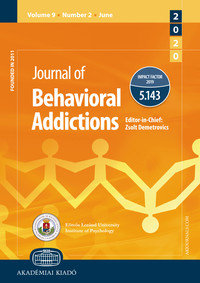The concept of buying-shopping disorder: Comparing latent classes with a diagnostic approach for in-store and online shopping in a representative sample in Switzerland
The concept of buying-shopping disorder: Comparing latent classes with a diagnostic approach for in-store and online shopping in a representative sample in Switzerland
Author(s): Mareike Augsburger, Andreas Wenger, Severin Haug, Sophia Achab, Yasser Khazaal, Joël Billieux, Michael P. SchaubSubject(s): Behaviorism
Published by: Akadémiai Kiadó
Keywords: shopping-buying disorder; compulsive buying; shopping addiction; Bergen Shopping Addiction Scale; latent class analysis
Summary/Abstract: Background and aims. Buying-shopping disorder and its transferability to the online sector is controversial. This study investigates in-store and online shopping patterns by comparing data-based modeling to a diagnostic cut-off approach. Further aims were to test model equivalence for gender and identify socio-demographic risk factors. Methods. In a representative survey, the Bergen Shopping Addiction Scale (BSAS) was applied, using both an online and in-store version. Latent class analyses were followed by multinomial logistic regression analyses to investigate socio-demographic variables. Measurement invariance across genders was tested with multi-group comparisons. Results. With N = 1,012, 3-class solutions provided the best model fit for both in-store and online shopping. Most individuals (76, 86%) were grouped in non-addicted classes, followed by risky (21, 11%) and addicted classes (both 3%). Twenty-eight percent of individuals in the online addicted shopping class remained unidentified using the cut-off. For online shopping, only lower age and education differentiated classes significantly. Discussion. Results indicate a close link between online and in-store shopping, albeit with distinguishing features. The cut-off yielded findings discrepant from class probabilities. That buying-shopping disorder mainly affects younger women of lower educational level must be questioned, given the limited associations identified. Conclusions. It is important not only to consider different settings of pathological shopping, but also to focus on groups that may not have appeared at risk in previous investigations (e.g., men, older age). The BSAS cut-off warrants further research.
Journal: Journal of Behavioral Addictions
- Issue Year: 9/2020
- Issue No: 3
- Page Range: 808-817
- Page Count: 10
- Language: English

